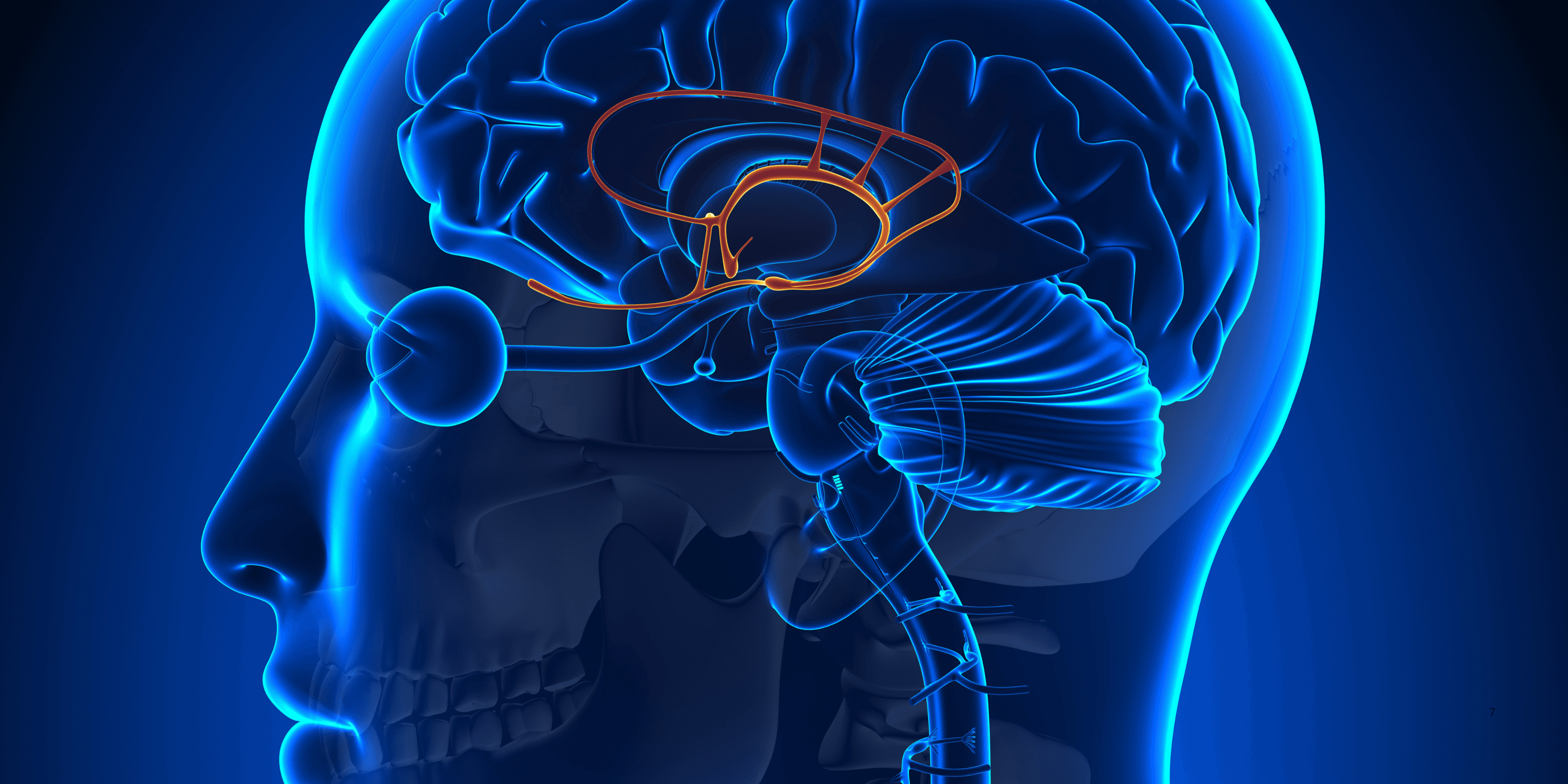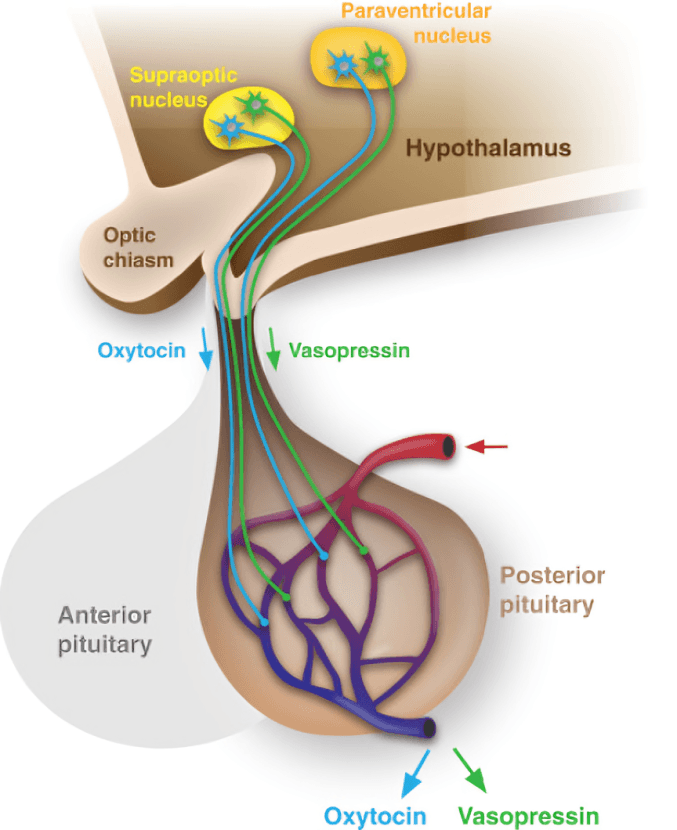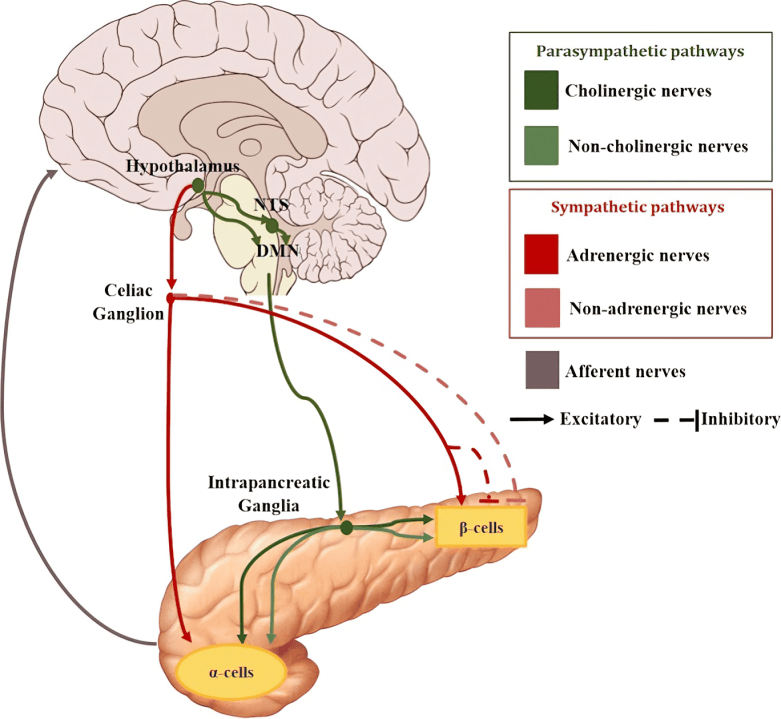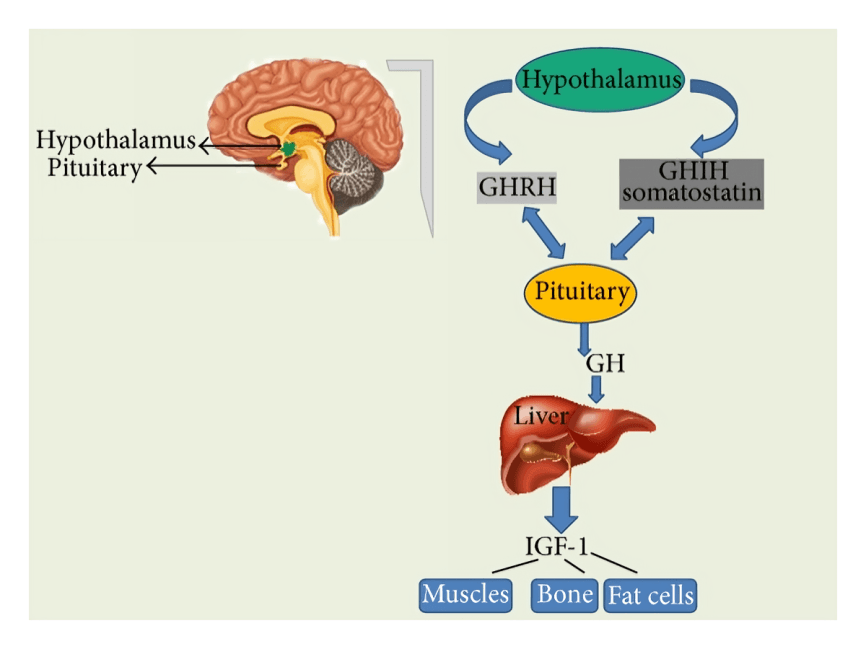
“
The hypothalamus and the endocrine system are intricately connected, forming a powerful control center that regulates hormones, body temperature, metabolism, emotions, and more. Located deep in the brain, the hypothalamus serves as the bridge between the nervous and endocrine systems by communicating directly with the pituitary gland. 1
1
”
Greek physician Galen described a brain region controlling body balance, likely the hypothalamus—his insight sparked centuries of study into brain-body hormonal links later explained by the endocrine system.1
The hypothalamus controls the pituitary gland, often called the “master gland,” by sending it releasing or inhibiting hormones that regulate all major endocrine glands like the thyroid and adrenal glands.2
This brain region maintains homeostasis by monitoring body temperature, blood pressure, and glucose levels, then activating hormonal signals to keep these variables within a healthy range through endocrine coordination3

Oxytocin and vasopressin are two hormones produced in the hypothalamus and transported to the posterior pituitary, where they are released into the bloodstream to control bonding and water balance
The hypothalamus helps initiate the body’s stress response by signaling the adrenal glands through the hypothalamic-pituitary-adrenal (HPA) axis, which then release cortisol to help cope with stress.4
It influences appetite and metabolism by producing hormones like neuropeptide Y and leptin receptors, signaling hunger or satiety and regulating energy use through endocrine pathways. 5
The hypothalamus plays a central role in the sleep-wake cycle by regulating melatonin production via the pineal gland and controlling circadian rhythms through its suprachiasmatic nucleus.6
In puberty, the hypothalamus releases gonadotropin-releasing hormone (GnRH), prompting the pituitary to signal ovaries or testes to produce sex hormones like estrogen and testosterone.7
It monitors blood osmolality and regulates thirst and fluid balance by releasing vasopressin, which signals the kidneys to retain water, ensuring stable hydration levels through endocrine action.8

When blood sugar drops, the hypothalamus sends hormonal cues to stimulate appetite and signal the pancreas to regulate insulin and glucagon levels for glucose balance.
The hypothalamus communicates with the autonomic nervous system and endocrine system, directing changes like heart rate, digestion, and hormone release based on emotional and physical stressors.9
Thyrotropin-releasing hormone (TRH) from the hypothalamus stimulates the pituitary to produce thyroid-stimulating hormone (TSH), which then prompts the thyroid gland to control metabolism.10
It also releases corticotropin-releasing hormone (CRH), which leads to the secretion of adrenocorticotropic hormone (ACTH) from the pituitary, influencing cortisol output by the adrenal glands. 11
The hypothalamus contributes to reproductive health by controlling the menstrual cycle and sperm production via hormonal signals affecting the ovaries and testes. 12

Growth hormone-releasing hormone (GHRH) from the hypothalamus triggers the pituitary to release growth hormone (GH), essential for tissue development, cell regeneration, and bone growth.
The hypothalamus can inhibit hormone secretion, such as releasing somatostatin to suppress growth hormone and thyroid-stimulating hormone, providing balance in the endocrine system.13
It contains specialized sensors that detect changes in the blood’s chemistry, temperature, and hormone levels, allowing fast feedback regulation to maintain internal stability. 14
Hypothalamic dysfunction can cause hormonal disorders like hypothyroidism, growth hormone deficiency, or adrenal insufficiency, showing how vital this region is for endocrine coordination.15
Emotional states such as fear, anger, and joy can trigger hypothalamic activity, altering hormone release and linking our psychological states to physical endocrine responses. 16
In the 20th century, Geoffrey Harris and Roger Guillemin showed how hypothalamic hormones control the pituitary, leading to treatments using synthetic hormones.17


